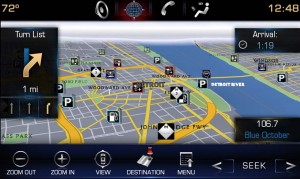Call it a communications breakdown. If you’ve ever tried to use your car’s voice recognition system to dial a phone number only to have it change the radio station to a disco channel, you’re not alone. A new J.D. Power study reports that voice recognition has become the single largest source of complaints about new vehicles.
And problems pairing smartphones to a vehicle’s Bluetooth system is the second most common problem, according to the J.D. Power 2014 Multimedia Quality and Satisfaction Study.
“Voice recognition and device connectivity are often inherent to the technology design and cannot be fixed at the dealership, creating a high level of angst among new-vehicle owners,” said Mike VanNieuwkuyk, executive director of global automotive at J.D. Power.
Virtually all new vehicles, from luxury models like the Mercedes-Benz S-Class, down to entry-level offerings such as the Chevrolet Spark, rely on voice recognition to help operate the increasing number of high-tech features showing up onboard. When such systems work right they can be a joy to work with, allowing a motorist to quickly program the navigation system, change the radio station or dial a phone number.
(Volvo hopes to overcome tech problems with new Sensus system in 2016 XC90 remake. Click Here for more.)
The problem is that voice recognition systems often fail, sometimes catastrophically. A command to change the radio channel is misinterpreted and the navigation screen is suddenly flooded with icons for gas stations and restaurants. After repeatedly struggling to find an address on the main street in a major city, a motorist gives up and plugs the information into their smartphone.
According to the new power report, built-in voice recognition systems are, if anything, appearing to get worse, rather than better, generating 8.3 complaints for every 100 vehicles this year. That compares with 7.6 of what, in Power-speak, is called “Problems per 100” in 2013.
The biggest problems:
- The system didn’t recognize or misinterpreted verbal commands, cited by 63%;
- The system didn’t recognize or misinterpreted names and words, cited by 44%;
- The system didn’t recognize or misinterpreted numbers, cited by 31%.
The new study isn’t the first to focus on the rising frustration with onboard technology. Power’s Initial Quality Survey, released in June, found that problems with technology, in general, now far outnumber issues with conventional mechanical systems – whether faulty engines or wind noise.
(Buyers question value of trouble-prone tech systems. Click Here for the story.)
Voice recognition has become increasingly important because of all the features automakers are packing into their vehicles. And, in many cases, motorists can only use voice programming when the vehicle is moving. Carmakers typically lock out their touchscreens to prevent distracted driving while driving, allowing a motorist only to use voice commands to add a new destination.
Despite the complaints, however, a full 70% of new car buyers still say they want a car that can be programmed by voice. The challenge, the study makes clear, is to come up with systems that actually do what they’re supposed to. That’s something manufacturers say they’re working on, but admit it can be difficult to deal with all the different accents that can be faced, even with English speakers. Few expect the problems to be resolved any time soon.
(Google unveils new Android-based infotainment system. Click Here to check it out.)


Ha! My 2011 Lincoln MKZ Hybrid has none of those problems.
My Lincoln’s voice recognition system works flawlessly.